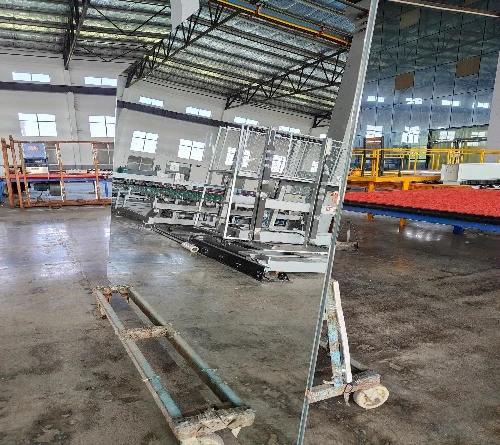Nov . 24, 2024 13:47 Back to list
low emissivity glass
Understanding Low Emissivity Glass A Modern Solution for Energy Efficiency
In the quest for energy efficiency and sustainability, low emissivity (low-E) glass has emerged as a game-changing material in the construction and design industries. This innovative glazing solution not only enhances the aesthetic appeal of buildings but also plays a crucial role in reducing energy consumption and improving indoor comfort. But what exactly is low-E glass, and how does it work?
Low-E glass is coated with a thin layer of metallic oxide, which significantly reduces the amount of infrared and ultraviolet light that can pass through it without compromising the amount of visible light that is transmitted. The key characteristic of this type of glass lies in its ability to reflect heat back into a room during winter and reject heat during summer. This dual functionality is achieved through the careful selection and application of materials on the glass surface, making it a versatile option for various climates and structures.
Understanding Low Emissivity Glass A Modern Solution for Energy Efficiency
In addition to its economic advantages, low-E glass also enhances indoor comfort. By regulating the temperature and reducing drafts, occupants experience a more stable and pleasant indoor environment. This is particularly beneficial for spaces that require consistent temperatures, such as offices, schools, and hospitals. Furthermore, the reduction in glare and UV exposure can also help protect furnishings, artwork, and finishes, prolonging their lifespan.
low emissivity glass

The environmental impact of using low-E glass cannot be overstated. As it promotes energy efficiency, it indirectly contributes to a decrease in greenhouse gas emissions. Buildings are responsible for a significant portion of the world's energy consumption, and by incorporating low-E glass into new constructions and retrofitting existing buildings, we can collectively make a positive impact on the environment. Many countries have already recognized this and offer incentives for constructing energy-efficient buildings, which include the use of low-E glass in their designs.
Low-E glass is available in a variety of styles, including double and triple glazing options, which further enhance its insulation properties. These types of glass utilize air or inert gas-filled spaces between the panes to improve thermal performance. Additionally, low-E coatings can be customized based on the desired properties, such as increased solar heat gain for colder climates or improved solar control in warmer regions.
Choosing the right low-E glass can be a crucial decision for builders and homeowners alike. Factors to consider include climate, orientation of the building, and specific energy performance goals. Consulting professionals who specialize in energy-efficient building materials can ensure that the right specifications are met, leading to optimal performance and benefits.
In summary, low-emissivity glass represents a significant advancement in building technology, combining both function and aesthetics to create a more energy-efficient environment. Its ability to reduce energy consumption, enhance indoor comfort, and contribute positively to the environment makes it an essential component in modern construction practices. As we move towards a more sustainable future, embracing innovations like low-E glass will be pivotal in achieving energy efficiency goals and fostering responsible building practices. By understanding and implementing low-E glass solutions, we can help create a greener planet while enjoying the many benefits it has to offer.
-
Safety and Style with Premium Laminated Glass Solutions
NewsJun.24,2025
-
Reinvents Security with Premium Wired Glass
NewsJun.24,2025
-
Premium Float Glass Line for Modern Architecture
NewsJun.24,2025
-
Low Emissivity Glass for Energy-Efficient Architecture
NewsJun.24,2025
-
High-Performance Insulated Glass Solutions for Modern Architecture
NewsJun.24,2025
-
Elevates Interior Style with Premium Silver Mirror
NewsJun.24,2025
Related PRODUCTS














